REPEATABILITY… the secret to finding performance improvements via dynamometer testing! This is a continuation of the Winter – 2004 DYNOmite News article.
Repeatability is not the same thing as accuracy, You can find useful improvements even if the dynamometer is not accurate. The reverse situation, however, is never the case.
Before you begin making engine configuration or tuning changes based on test results, you need to be certain the results are accurate – or at least something that you can duplicate. It makes no difference if your testing is done on the dynamometer or the racetrack, if you get different results each time (even without making any changes) you don’t have control of your experiments. Any conclusion you draw will be based more on your bias than on the results.
If you haven’t done it recently, give your system a repeatability checkup. Start by turning on your data-acquisition computer(s) – without even starting the engine. Let the electronics warm up, for at least 30 minutes. You always do that don’t you? This stabilizes components’ electrical characteristics, greatly reducing thermal induced drift in readings!
Zero out any Torque, EGT, etc. errors… then wait and watch over the next 15 minutes. The drift you observe is an electronic accuracy limit to each channel. You can’t find power deviations smaller that these deviations without upgrading hardware.
Assuming the drift meets your requirements, start turning on any accessories, like fuel pumps, cell fans, 60-Hz fluorescent lights, etc. If any of them affect the channel’s reading, you should investigate their power supply and ground wiring. Most likely a ground loop exists which is disturbing the offset reference for the channel. Note, lights tend to bother frequency readings, not 0-5 volt channels.
At the least, keep in mind that you should be doing your offset calibration of the channel with any offending device in the same state as when you test. Obviously, you do not zero the torque channel, and then turn on a pump, if it adds 2 ft. lbs. to its readings!
Notes about channel accuracy…
Analog 0-5 Volt Channels: The DYNOmite-Pro board’s 0-5 volt channel accuracy is better than +- 0.5%, when reading from ratiometric outputs (e.g. DYNOmite pressure sensors using the DYNOmite’s regulated, orange, 5-volt lead to power them). This does not include any individual sensor’s own contribution to error.
Analog EGT Channels: The DYNOmite-Pro board’s thermocouple millivolt channel accuracy (type-K EGTs) is better than +- 1.0%, when reading from type-K thermocouple outputs (e.g. DYNOmite EGT or oil-temperature probes). This does not include any individual sensor’s own contribution to error.
Analog Strain-Gauge Channels: The DYNOmite-Pro board’s full-bridge torque-channel accuracy is better than +- 0.5%, when reading from full-bridge 3mV/v strain-gauge outputs (e.g. DYNOmite torque arms and load cells). This does not include any individual sensor’s own contribution to error.
Frequency Channels: The DYNOmite-Pro board’s frequency channel accuracy is better than +- 0.1%, when reading from appropriate pulse-wave sources. This includes square-wave RPM sensors or flow-meter transducers.
Flow Transducers: This does not include any individual flow-meter’s own contribution to error. In the case of turbine air-flow transducers (and some liquid-flow transducers), their output Hertz is non-linear to flow. I such cases, in addition to entering a gain value, based on the transducer’s K-factor (pulse count versus flow), an exponent and/or look-up table map must be utilized. Under steady-state flow, out-of-the-box calibration values typically provide about +- 2% accuracy (to absolute) – over their recommend flow range. Note: Most air-flow monitoring requires some sort of inline plenum to dampen out reverse-flow waves.*
*Plenum size, when capturing a typical internal-combustion engine’s intake air flow, is everything – in regards to obtaining accurate data. Pulsing in the intake track, particularly when not using a large plenum to dampen reversion flow, can cause the turbine to misstate flow. This is because reverse flow at the turbine does not provide the same fan-blade efficiency – as forward flow. So, the (theoretically) self-canceling flows may not exactly even out. Unfortunately, large-plenum sizes slow the turbine’s reaction to changing engine conditions. Therefore, your selected plenum size needs to be a compromise between acceptable accuracy and response time. Engine configuration will also significantly influence the plenum-size requirements. High-rpm, multi-cylinder engines using an undivided intake manifold (especially with a single carburetor) have reasonably low reversion characteristics. Conversely, low-cylinder counts, individual manifold runners, etc. all tend to strengthen reverse-flow waves at the air-flow turbine – requiring very large (picture a 30-gallon drum) to minimize the errors. The best way to determine minimum plenum size, for a given engine and RPM combination, is to test various size plenums – under steady-state conditions. Then, reduce the size of the plenum – until further reductions cause unacceptable deviations from the larger-plenum tests. Then, test how long it takes to stabilize to those readings after momentary variations in RPM or throttle settings. That will help determine the response limits of that size plenum.
It will become obvious that the absolute accuracy of the DAQ channels, and even the air-flow turbine itself, are only a small subset of the total potential error. However, the electronics and turbine can be periodically tested on any calibrated air-flow bench to reduce their contribution to system error – to even below our above general specifications.
For more helpful information, you can view tips on improving repeatability over at SuperFlow.
